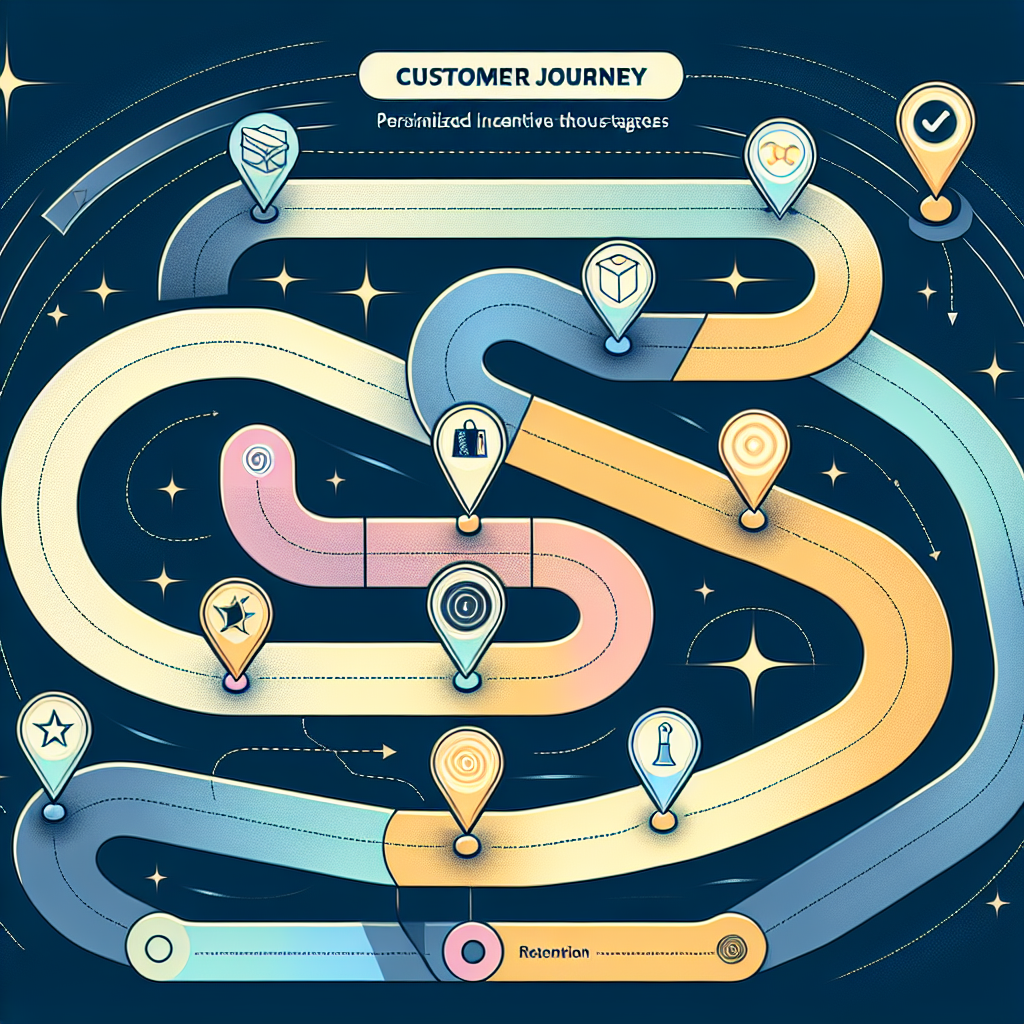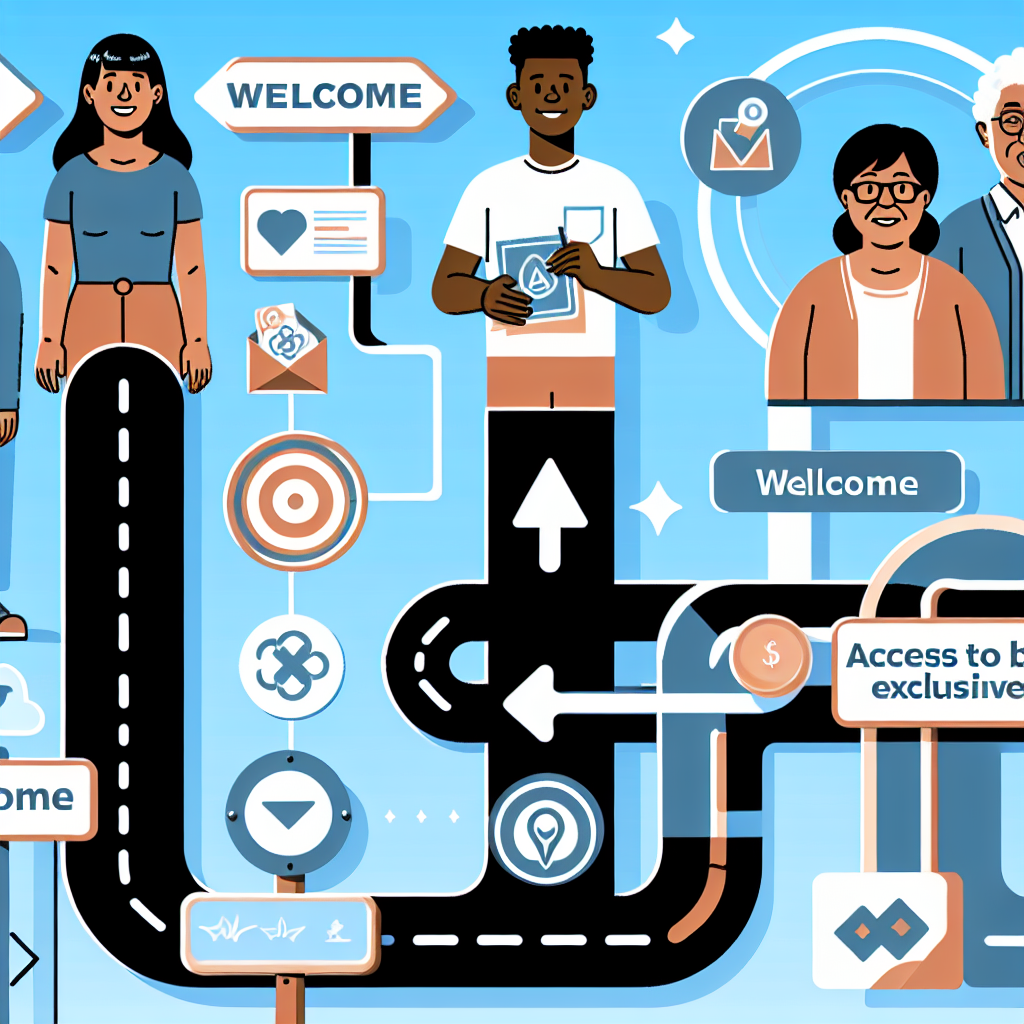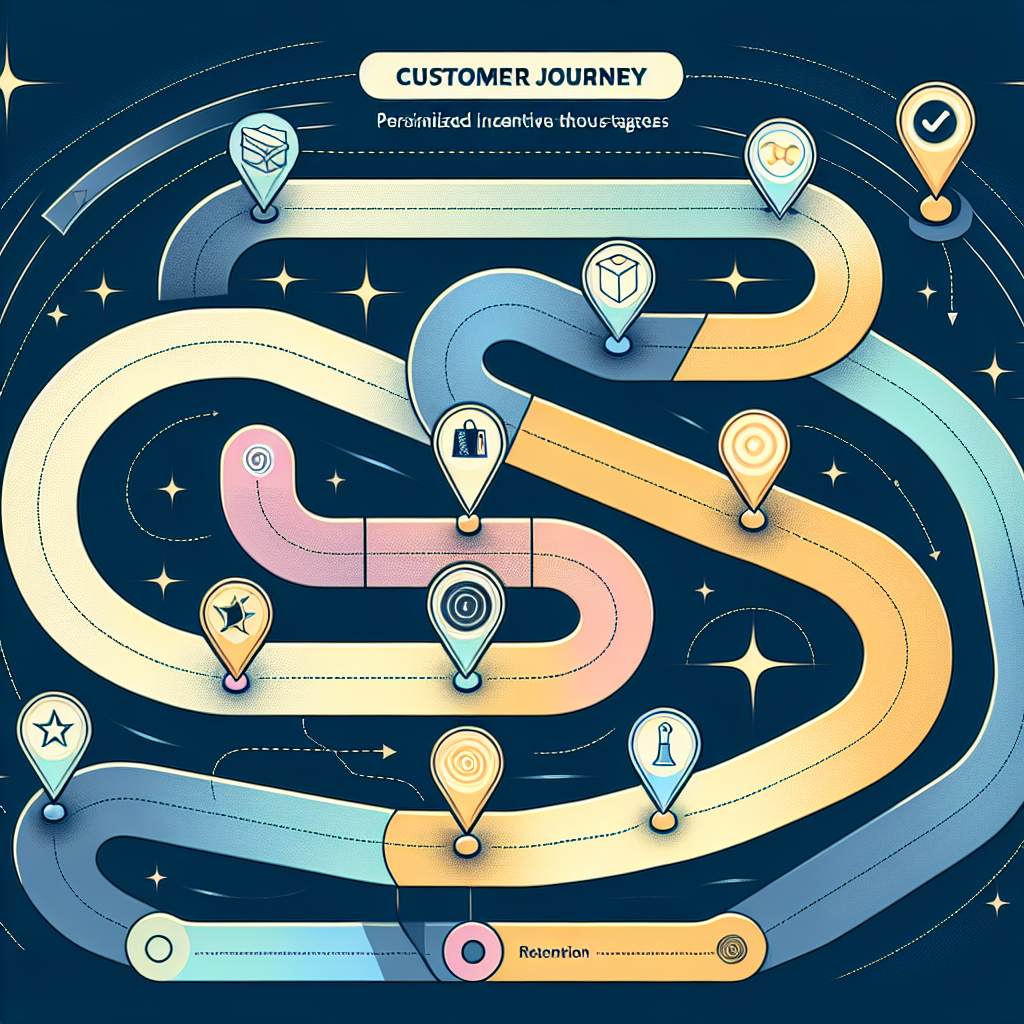In order to effectively engage with customers throughout their journey, it is crucial to understand how to adapt incentives to different stages. To create a successful customer journey, you need to provide the right motivations and rewards at each step of the way. This article explores key strategies for tailoring incentives to enhance customer experiences and ultimately drive business growth. From initial awareness to post-purchase loyalty, you will learn how to nurture relationships and foster long-term customer satisfaction. So let’s delve into the world of customer journey incentives and discover how you can optimize your approach.

Understanding the Customer Journey
The customer journey refers to the various stages that a customer goes through when interacting with a brand or making a purchase. It is essential for businesses to understand the customer journey in order to effectively engage with customers and provide them with the right incentives at each stage of their journey. By mapping out the customer journey and identifying the touchpoints where customers interact with the brand, businesses can create targeted strategies to drive customer engagement and increase conversions.
Defining the customer journey
The customer journey can be divided into several stages, including awareness, consideration, decision, purchase, and post-purchase. Understanding each stage and the emotions and behaviors associated with it allows businesses to tailor their incentives to meet the specific needs and desires of customers at that particular moment in their journey.
Mapping the different stages of the customer journey
Mapping the different stages of the customer journey involves visualizing the path that customers take from the moment they become aware of a brand to when they make a purchase and beyond. By mapping out the customer journey, businesses can gain insights into how customers interact with their brand, the touchpoints they encounter, and the potential challenges they may face along the way. This understanding enables businesses to create a seamless and personalized experience for customers, ensuring that they receive the right incentives at every stage.
Identifying customer touchpoints
Customer touchpoints are the various interactions that customers have with a brand throughout their journey. These touchpoints can include website visits, social media interactions, customer service interactions, and more. Identifying customer touchpoints allows businesses to determine where they have opportunities to engage with customers and provide them with incentives that are relevant to their needs and preferences. By understanding the touchpoints, businesses can optimize each interaction to create a positive customer experience and increase the likelihood of conversion.
Incentives for the Awareness Stage
The awareness stage is the initial stage of the customer journey, where customers become aware of a brand’s existence or a problem they need to solve. At this stage, incentives play a crucial role in capturing customers’ attention and creating brand awareness.
Creating brand awareness
To create brand awareness, businesses can offer incentives such as free trials, discounts, or promotional offers. These incentives motivate potential customers to engage with the brand and explore its products or services.
Using educational content
Educational content can be a powerful incentive at the awareness stage. By providing valuable and relevant information through blog posts, articles, or webinars, businesses can establish themselves as experts in their industry and build trust with potential customers.
Offering gated content
Gated content refers to valuable and exclusive content that is accessible only after users provide their contact information. By offering gated content, such as eBooks or whitepapers, businesses can incentivize potential customers to provide their email addresses, allowing for further communication and nurturing.
Providing access to exclusive events
Hosting or participating in exclusive events, such as webinars or industry conferences, can be an effective way to generate awareness for a brand. By inviting potential customers to these events, businesses can provide valuable insights and establish a personal connection, creating a sense of exclusivity and motivation for continued engagement.
Incentives for the Consideration Stage
The consideration stage is when customers evaluate different options and consider making a purchase. Incentives at this stage should focus on increasing the perceived value of the brand’s products or services and encouraging customers to move forward in their decision-making process.
Offering personalized discounts or coupons
Personalized discounts or coupons can be a highly effective incentive at the consideration stage. By tailoring discounts to specific customer preferences or behaviors, businesses can motivate potential customers to choose their brand over competitors.
Providing free trials or samples
Free trials or samples allow customers to experience a product or service firsthand before making a purchase. This incentive builds trust and confidence in the brand’s offerings and helps customers make an informed decision.
Implementing referral programs
Referral programs incentivize customers to refer friends or family to the brand. By offering rewards or discounts to both the referrer and the referred, businesses can leverage their existing customer base to expand their reach and acquire new customers.
Showcasing social proof and testimonials
Social proof, such as customer testimonials or reviews, can be a persuasive incentive at the consideration stage. By highlighting positive experiences and testimonials from satisfied customers, businesses can alleviate any doubts or uncertainties potential customers may have and increase their likelihood of making a purchase.
Incentives for the Decision Stage
The decision stage is when customers have narrowed down their options and are ready to make a purchase. Incentives at this stage should focus on addressing any remaining concerns or objections and creating a sense of urgency or exclusivity.
Offering limited-time promotions
Limited-time promotions, such as flash sales or exclusive discounts, create a sense of urgency and motivate customers to take immediate action. By placing time constraints on the offer, businesses can encourage customers to make a decision and complete their purchase.
Providing additional warranties or guarantees
Providing additional warranties or guarantees can help alleviate any concerns customers may have about the quality or reliability of a product or service. These incentives increase the perceived value of the purchase and provide customers with peace of mind.
Creating urgency with countdown timers
Countdown timers can create a sense of urgency and scarcity, prompting customers to make a decision before time runs out. By visually illustrating the limited availability or time remaining for a particular offer, businesses can motivate customers to take action.
Implementing price matching
Price matching ensures that customers get the best deal possible. By offering to match or beat competitors’ prices, businesses instill confidence in customers that they are receiving the best value for their money, making them more likely to choose and purchase from the brand.

Incentives for the Purchase Stage
The purchase stage is when customers complete their transaction and make a purchase. Incentives at this stage should focus on creating a seamless and positive buying experience for customers, as well as encouraging repeat purchases and loyalty.
Offering flexible payment options
Offering flexible payment options, such as installment plans or buy now, pay later options, can remove financial barriers and make it easier for customers to complete their purchases. This incentive increases convenience and accommodates customers with varying financial situations.
Providing hassle-free returns and exchanges
A hassle-free returns and exchanges policy reassures customers that their satisfaction is a priority. By offering easy and convenient return or exchange processes, businesses can build trust and encourage customers to make a purchase without fear of buyer’s remorse.
Implementing loyalty programs
Loyalty programs incentivize repeat purchases and customer loyalty. By offering rewards, discounts, or exclusive perks to loyal customers, businesses can encourage repeat business and foster long-term relationships with their customers.
Offering bundled discounts
Bundled discounts can incentivize customers to purchase additional products or services by offering a discounted bundle price. This incentive increases the perceived value of the purchase and encourages customers to explore complementary offerings.
Incentives for the Post-Purchase Stage
The post-purchase stage is when businesses continue to engage with customers and foster a positive relationship after the transaction is complete. Incentives at this stage should focus on building customer loyalty and encouraging repeat purchases.
Sending follow-up emails with exclusive offers
Sending follow-up emails with exclusive offers or discounts is a great way to stay connected with customers and keep them engaged. By providing them with valuable offers that are relevant to their previous purchase, businesses can encourage repeat purchases and nurture customer loyalty.
Providing post-purchase support and assistance
Efficient post-purchase support and assistance are essential for customer satisfaction. By promptly addressing any concerns or issues customers may have, businesses can show their commitment to customer success and encourage positive word-of-mouth referrals.
Sending personalized thank you notes
Sending personalized thank you notes shows appreciation for the customer’s business and strengthens the relationship. By taking the time to express gratitude and acknowledging their support, businesses can leave a lasting positive impression on customers.
Implementing a customer loyalty program
A customer loyalty program rewards customers for their continued patronage. By offering exclusive benefits and rewards to loyal customers, businesses can incentivize repeat purchases and foster a lasting bond with their most valuable customers.
Evaluating and Optimizing Incentives
To ensure that the incentives offered throughout the customer journey are effective and aligned with business goals, it is crucial to continuously evaluate and optimize them. This involves assessing customer data, collecting feedback and reviews, conducting A/B testing, and iterating and refining incentive strategies based on the insights gained.
Tracking and analyzing customer data
Tracking and analyzing customer data allows businesses to gain insights into customer behaviors, preferences, and engagement patterns. By leveraging this data, businesses can identify which incentives are driving conversions and adjust their strategies accordingly.
Collecting feedback and reviews
Collecting feedback and reviews from customers provides valuable insights into their experiences and perceptions of the incentives offered. This feedback can help identify areas for improvement and enable businesses to tailor their incentives to better meet customer expectations.
Conducting A/B testing
A/B testing involves comparing two or more variations of an incentive to determine which performs better. By testing different incentive strategies, businesses can identify the most effective approaches and make data-driven decisions for optimization.
Iterating and refining incentive strategies
Based on the insights gained from customer data, feedback, and A/B testing, businesses should continuously iterate and refine their incentive strategies. This iterative process enables businesses to adapt and improve their incentives to better meet the changing needs and preferences of their customers.
Importance of Targeting and Personalization
Targeting and personalization are key factors in delivering effective incentives throughout the customer journey. By tailoring incentives to specific customer personas, utilizing data-driven insights, segmenting the customer base, and delivering personalized messaging and offers, businesses can create a more relevant and engaging experience for their customers.
Tailoring incentives to customer personas
Customer personas are fictional representations of the ideal customers for a business. By understanding the unique characteristics, needs, and preferences of these personas, businesses can tailor their incentives to resonate with their target audience and increase the likelihood of conversion.
Utilizing data-driven insights
Data-driven insights provide valuable information about customer behaviors, preferences, and purchase patterns. By leveraging this data, businesses can identify trends and make informed decisions about which incentives are most likely to resonate with their customers at each stage of the customer journey.
Segmenting the customer base
Segmenting the customer base involves categorizing customers into groups based on common characteristics or behaviors. By segmenting customers, businesses can target their incentives more effectively and deliver personalized offers that are tailored to the specific needs and interests of each segment.
Delivering personalized messaging and offers
Personalized messaging and offers demonstrate that a business understands and values its customers on an individual level. By delivering personalized incentives based on a customer’s past interactions, purchase history, or preferences, businesses can create a more personalized and engaging experience that drives conversion and customer loyalty.
Balancing Cost and Value
When designing incentives for the customer journey, it is essential to strike a balance between the cost of the incentives and the value they provide to both the customer and the business. By carefully considering the return on investment, aligning incentives with business goals, considering the lifetime value of customers, and weighing the impact on profit margins, businesses can ensure that their incentives are both effective and sustainable.
Calculating the return on investment of incentives
Calculating the return on investment (ROI) of incentives involves assessing the costs associated with offering incentives and comparing them to the benefits or value generated. By analyzing the ROI, businesses can determine which incentives are the most cost-effective and contribute the most to their overall business objectives.
Ensuring incentives align with business goals
Incentives should be aligned with the overarching goals and objectives of a business. By ensuring that the incentives offered throughout the customer journey are in line with business goals, businesses can maximize the impact of their incentives and avoid investing in incentives that do not contribute to their desired outcomes.
Considering the lifetime value of customers
The lifetime value of customers refers to the revenue generated from a customer over the course of their relationship with a business. When designing incentives, it is important to consider the potential long-term value that a customer may bring. By offering incentives that foster customer loyalty and encourage repeat purchases, businesses can increase their overall profitability.
Weighing the impact on profit margins
While incentives can drive customer engagement and increase conversions, it is crucial to consider their impact on profit margins. By evaluating the costs associated with offering incentives and balancing them against the potential revenue generated, businesses can ensure that their incentives are financially sustainable and do not negatively impact their bottom line.
The Role of Experimentation and Innovation
Experimentation and innovation play a crucial role in keeping incentives fresh, exciting, and relevant to customers’ evolving needs and preferences. By encouraging creative incentive ideas, testing new incentives across different stages of the customer journey, monitoring and learning from the results, and continuously adapting and improving incentive strategies, businesses can stay ahead of the competition and maintain customer engagement.
Encouraging creative incentive ideas
Encouraging creative incentive ideas within the organization fosters innovation and keeps incentives exciting and engaging for customers. By creating a culture that values and encourages the generation of new and unique incentive ideas, businesses can constantly refresh their strategies and stand out in a crowded market.
Testing new incentives across different stages
Testing new incentives across different stages of the customer journey allows businesses to identify which incentives are most effective at each stage. By experimenting with different types of incentives, businesses can gather data and insights to inform their future incentive strategies, ensuring they are constantly evolving and improving.
Monitoring and learning from results
Monitoring and analyzing the results of incentive strategies is essential for understanding their impact and identifying areas for improvement. By closely monitoring customer behavior, conversion rates, and other relevant metrics, businesses can learn from successes and failures, making data-driven decisions to optimize their incentives.
Continuously adapting and improving
The customer journey is not static, and neither should be the incentives offered throughout it. By continuously adapting and improving incentive strategies based on feedback, data, and changing customer needs, businesses can stay relevant, maximize engagement, and maintain a competitive edge.
In conclusion, adapting incentives to different stages of the customer journey is crucial for businesses to effectively engage with customers and drive conversions. By understanding the customer journey, mapping out the stages, and identifying customer touchpoints, businesses can create targeted strategies and provide incentives that resonate with customers at each stage. By offering incentives that create brand awareness, provide value in the consideration and decision stages, enhance the purchase experience, and foster post-purchase loyalty, businesses can optimize the customer journey and build long-term relationships with their customers. Through evaluating and optimizing incentives, targeting and personalization, balancing cost and value, and embracing experimentation and innovation, businesses can continuously improve their incentive strategies and drive sustainable growth.


